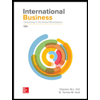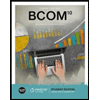MalikFProject#8
docx
keyboard_arrow_up
School
Southern New Hampshire University *
*We aren’t endorsed by this school
Course
830
Subject
Business
Date
Feb 20, 2024
Type
docx
Pages
17
Uploaded by fmalik89
BUSI830 Project8 1
School of Business, Liberty University
Faizan Malik
DMAIC Case Study (FINAL) Assignment
By submitting this assignment, I attest this submission represents my own work, and not that of another student, scholar, or internet source. I understand I am responsible for knowing and correctly utilizing referencing and bibliographical guidelines. I have not submitted this work for any other class.
BUSI830 Project8 2
Abstract
The COVID-19 pandemic has transformed the landscape of healthcare delivery, emphasizing the significance of telehealth services to ensure accessible medical care. However, healthcare disparities, particularly in rural areas, persist despite technological advancements. This case study, conducted at OHSI Medical Clinic in Mentone, Texas, serves as an example of how to address the underutilization of telehealth services and improve healthcare accessibility in a remote and underserved region.
BUSI830 Project8 3
Introduction
The COVID-19 pandemic drastically changed our approach to public health and how we interact in a globalized society, including how we receive medical care. Telehealth services, or the use of telecommunications and information technology to provide healthcare services to patients at a distance, saw a 154% increase in utilization between February and March 2020 (Monaghesh & Hajizadeh, 2020). Despite many in the medical field continuing telehealth services beyond the peak of the pandemic, those in more rural areas have been unable to reap the
many benefits when compared to those in more urban areas. OHSI Medical Clinic in Mentone, Texas is the sole medical facility in Loving County, one of the smallest countries in the United States with a population density of only 0.13 people per square mile (Kerlin et al., 2022). Despite implementing telehealth services during the pandemic, patients of OHSI Medical Clinic have underutilized such offerings, prompting the need for a comprehensive analysis and improvement plan to enhance telehealth accessibility and utilization in this remote and underserved region. This DMAIC case study aims to evaluate the factors contributing to the underutilization of telehealth services at OHSI Medical Clinic and develop effective strategies for optimizing telehealth accessibility and utilization.
Case Study ‘Plan’
To properly assess the underutilization of telehealth services at OHSI Medical Clinic, a strategic team will be formulated consisting of Dr. Gregory House, the Medical Director, Dr. Lisa Cuddy, the Director of Telehealth, and various leaders of the local community. The team will then look to define the research objectives of determining potential factors contributing to the underutilization of telehealth services. In defining the research objectives, the team will look to use value stream mapping (VSM), a lean management technique that visually depicts the flow
Your preview ends here
Eager to read complete document? Join bartleby learn and gain access to the full version
- Access to all documents
- Unlimited textbook solutions
- 24/7 expert homework help
BUSI830 Project8 4
of materials and information through a process, to visualize the current telehealth process and workflow at OHSI Medical Clinic (Marin-Garcia et al., 2021). Once objectives have been clearly
defined, the team will work to develop a data collection plan that outlines the plan for collecting patient data, to obtain a baseline for the processes identified via VSM. The data collection plan ensures that the data that is collected is relevant to the research questions and can help identify potential challenges for the study (Moser & Korstjens, 2018). From the data collection plan, using a mixed-methods approach, the team will utilize quantitative methodologies to collect data related to telehealth service usage from March 2020 during the peak of the pandemic up to the most recent data available and qualitative methodologies to gain insight from medical providers and their patients. This data will then provide insight into potential issues contributing to the underutilization of telehealth services, which will then be presented to OHSI Medical Clinic leadership to implement process changes, new means of training or communication, or new technology. Once the issues with underutilization have been addressed, the team will conclude their study by providing a sustainable framework for maintaining the improvements made throughout the case study to ensure OHSI Medical Clinic's telehealth services remain effective over the long term.
Define Phase
The OHSI Medical Clinic had initially envisioned that the implementation of telehealth services would result in increased access to healthcare during the Covid-19 pandemic, in an area that has historically been underserved in healthcare access However, OHSI Medical Clinic's leadership has indicated that the anticipated benefits have not materialized as expected with patients are not embracing telehealth options and medical providers are not witnessing the expected increase in telehealth-related appointments. With the key problem of underutilization of
BUSI830 Project8 5
telehealth services at the OHSI Medical clinic identified, the team moved directly into defining the objective of the study to understand the magnitude of the underutilization. To ensure that the defined objectives address the key problem, the team utilized value stream mapping to gain a better understanding of the clinic's telehealth service delivery process, including value-added and
non-value-added steps, and identify potential contributing factors to the underutilization of telehealth services, as illustrated in Figure 1. Figure 1: Value Stream Mapping for the current telehealth process and workflow at OHSI Medical Clinic.
The VSM highlighted several critical areas contributing to the underutilization of telehealth services at OHSI Medical Clinic. One key issue was the requirement for patients to register and receive their initial visit in person at the clinic, which posed a significant barrier, especially for those who couldn't travel to the facility. This limitation was compounded by the scarcity of available telehealth services for follow-up care, with the VSM highlighting that only a select group of medical providers at OHSI Medical Clinic offered telehealth services during limited timeframes, often being fully booked months in advance. This scheduling constraint further hindered patient access to telehealth services, as limited access to healthcare services, along with greater social isolation, in rural areas collectively contribute to challenges for adults in accessing and affording necessary healthcare (Cohen et al.,2018). Moreover, it was evident that OHSI
BUSI830 Project8 6
Medical Clinic's telehealth offering required patients to have a high-speed internet connection. Unfortunately, previous research indicates that broadband internet access is limited in rural America, including Mentone, where OHSI Medical Clinic is located. This lack of broadband access, as highlighted by Drake et al. (2019), acts as a significant barrier to the use of telemedicine, with only 69.3% of rural counties having broadband internet access compared to 96.7% of urban counties. With OHSI patients having access to only 20.31% DSL internet coverage and maximum speeds of 125 Mbps, it is improbable that they possess the necessary technologies to support telehealth services (Best Neighborhood, n.d.). With several contributing factors identified by the VSM, the OHSI team was able to clearly define their research objective of improving access to telehealth services for patients at the OHSI Medical Clinic. Measure Phase
With the research objective solidified, the OHSI then moved into the Measure Phase of their DMAIC case study, beginning with a data collection plan to identify the specific data that needs to be collected, including patient data, and to determine what data collection methods to use, including surveys or interviews (Shamsuzzaman et al., 2018). As outlined in Figure 2, the OHSI extracted data from the clinic’s Electronic Health Record (EHR) software, patient feedback via surveys (Appendix 1), and medical provider perspective via interviews (Appendix 2). Specific Monitoring, Evaluation, or Research question
Data Needed
Type of Data
Source of Data
Possible Barriers accessing Data
Data Collection Method
Resources Needed
To what extent do patients face barriers to Telehealth Utilization?
Patient demographics
Quantitative
Electronic Health Records (EHR)
Privacy and data security
Data extraction
EHR access
Telehealth adoption at OHSI Medical Clinic?
Patient feedback on telehealth
Qualitative
Patient surveys or interviews
Limited patient participation
Surveys
Survey tools
How do medical providers perceive telehealth?
Medical provider perspectives
Qualitative
Interviews with medical providers
Provider availability and willingness
Interviews
Interviewers
OHSI DMAIC Case Study Data Collection Plan
Figure 2: Data Collection Plan for OHSI Medical Clinic patient data, patient feedback, and
medical provider perspective.
Your preview ends here
Eager to read complete document? Join bartleby learn and gain access to the full version
- Access to all documents
- Unlimited textbook solutions
- 24/7 expert homework help
BUSI830 Project8 7
The data collection for patient demographics presented a unique challenge, as privacy and data security concerns are pivotal barriers in the realm of healthcare data collection and research. As such, the OHSI team implemented a multifaceted approach including obtaining informed consent
about the risks and benefits of the study, including how their data will be collected, used, and shared, and data encryption techniques to protect against unauthorized access (Mooney & Pejaver, 2018). The patient surveys also covered a wide array of topics, ranging from satisfaction
levels with telehealth experiences at OHSI Medical Clinical, difficulties or challenges faced during telehealth appointments, and, if telehealth appointments were preferred over in-person visits for routine healthcare needs in the future. Finally, the interviews with healthcare providers sought to understand the impact of telehealth offerings and suggestions for improvement. Collectively, these data collection methods provided the OHSI team with a comprehensive and multifaceted dataset, enabling a holistic understanding of telehealth utilization in their rural healthcare setting.
Analyze Phase
Once data collection has been completed, the OHSI team then moved to the analysis phase, in which they aimed to identify and understand the root causes of the problem that is being addressed by the DMAIC case study (Ahmed, 2019). Patient ID
Age
Gender
Ethnicity
Household Income
Education Level
Distance (Miles) from OHSI Medical Clinic
Internet Access at Home
Prior Experience with Telehealth
Type of Health Insurance
1
45
Female
White
$50,000 - $75,000
College degree
10
Yes
Yes
Private
2
68
Male
African American
$25,000 - $50,000
High school diploma
25
Yes
No
Medicare
3
55
Female
Hispanic
Less than $25,000
Some college
5
No
Yes
Medicaid
4
32
Male
Asian
$75,000 - $100,000
Graduate degree
15
Yes
Yes
Private
5
70
Male
White
$50,000 - $75,000
College degree
30
No
No
Medicare
6
58
Female
African American
$25,000 - $50,000
Some college
12
Yes
Yes
Medicaid
7
40
Male
Hispanic
Less than $25,000
High school diploma
8
Yes
No
Uninsured
8
49
Female
Asian
$75,000 - $100,000
Graduate degree
20
Yes
Yes
Private
9
62
Male
White
$50,000 - $75,000
College degree
40
No
No
Medicare
10
35
Female
African American
$25,000 - $50,000
Some college
18
Yes
Yes
Medicaid
Figure 3: Data collected from OHSI Medical Clinic EHR
BUSI830 Project8 8
Beginning with data collected from OSHI Medical Clinic’s HER, as illustrated in Figure 3. The patient demographic data illustrated an age range of 32 to 79 years old with varying levels of prior experience with telehealth services, indicating age may play a role in shaping patient preferences and barriers to telehealth adoption. The included patients also come from diverse ethnic backgrounds and education levels. Analyzing this data might reveal disparities in telehealth utilization among different ethnic groups or educational backgrounds, shedding light on potential access and equity issues. Income and distance from the OHSI Medical Clinic are two variables that could be interrelated, with patients having lower household incomes and those residing closer to the clinic potentially finding telehealth more attractive due to potential financial constraints or the convenience factor. Figure 4: Results from OHSI Medical Clinic patient telehealth service feedback survey
Moving to the patient surveys, as demonstrated in Figure 4, the OSHI team found that the patient
exhibited mostly positive satisfaction levels and an overwhelming preference for future telehealth utilization. This indicates that the majority of patients had a favorable experience with telehealth services offered by OHSI Medical Clinic and suggests that telehealth has the potential to address some of the historical barriers faced by this community. However, the survey data also
pointed to a few challenges faced during telehealth appointments, specifically related to technical
difficulties of internet connectivity issues. These issues highlight a known issue with healthcare
BUSI830 Project8 9
and internet access in rural areas, as well as the need for continuous improvement efforts in telehealth service delivery.
Figure 5: Results from OHSI Medical Clinic medical interviews
The interviews conducted by the OSHI also shed light on the perspective of healthcare providers on telehealth, providing both benefits and limitations as illustrated in Figure 5. Notably, telehealth adoption has significantly improved patient reach, as indicated by 70 mentions, highlighting its potential to address healthcare access disparities. Enhanced convenience for patients, with 20 mentions, underscores the flexibility and comfort that telehealth offers, potentially reducing barriers to healthcare utilization. However, the data also points to some challenges, with mentions of an increased workload (10), possibly reflecting the need for healthcare providers to adapt to the demands of telehealth services. Additionally, while telehealth
reduces travel time for patients (50), particularly beneficial for those in remote areas such as Mentone One County, it also has limitations in conducting physical examinations (60), Technical
issues during appointments (25), and privacy concerns (15). These challenges may outweigh the
Your preview ends here
Eager to read complete document? Join bartleby learn and gain access to the full version
- Access to all documents
- Unlimited textbook solutions
- 24/7 expert homework help
BUSI830 Project8 10
benefits and be the root cause of the limited telehealth offerings by OHSI Medical Clinical healthcare providers.
Improve Phase
Once in the improvement phase, the OHSI team focused on addressing the root causes identified during the Analyze Phase to optimize their telehealth services to increase adoption amongst patients. Given the size of the facility, the team opted to implement pilot studies in various departments to ensure the final recommendations provided the greatest value to the organization. As explained by Lowe (2019), during the improvement phase of DMAIC, pilot studies serve to test and refine potential solutions to identified root causes, ensuring their feasibility, effectiveness, and prevention of new problems (Lowe, 2019). The pilot studies began with enhancing technical infrastructure at OHSI Medical Clinic to combat technical issues encountered during telehealth appointments by eliminating the requirement for patients to register and receive their initial visit in person at the clinic, partnering with local internet service providers to offer discounted or subsidized broadband internet service to patients and expanding the availability of telehealth services for follow-up care (Struminger and Arora, 2019). The team then worked to address privacy and workload concerns voiced by both patients’ healthcare providers at OHSI Medical Clinic, to ultimately increase availability of providers and adoption by patients, by introducing telehealth education and training programs. These programs included telehealth case studies, simulation exercises, and hands-on training to provide healthcare providers with practical experience that covered topics of ethical considerations, data security, and patient privacy in telehealth (Chike-Harris et al., 2021). Finally, the OSHI team implemented
a system for regular evaluation and feedback collection from both patients and providers, which combined are used to inform ongoing refinements and adaptations to telehealth services.
BUSI830 Project8 11
Continual feedback loops within healthcare settings have demonstrated improved patient satisfaction and outcomes (Gibbons et al., 2021). Control Phase
As the combination of recommendations in the improvement phase yielded positive results for telehealth adoption by OHSI Medical Clinic patients, the OHSI was able to move into the control phase to ensure sustained success. This began with developing Standard Operating Procedures (SOPs) to outline the step-by-step processes that healthcare providers must follow when conducting telehealth appointments to ensure consistency and quality in healthcare delivery. The SOPs should address patient eligibility and consent, technology and equipment, and clinical procedures as a means of ensuring the quality and safety of telehealth services (Sugarman & Busch, 2023). The OSHI team then implemented several Key Performance Indicators (KPIs) for each department and the entire clinic to provide a quantifiable way to measure the progress of telehealth implementation and the performance of their medical providers. Following the recommendations of Chuo et al. (2020), the OHSI team implemented KPIs for number of telehealth appointments, the percentage of patients who use telehealth, average telehealth appointment duration, patient satisfaction with telehealth, provider satisfaction
with telehealth, and cost savings from telehealth, to comprehensively assess the utilization, adoption, efficiency, quality, and financial impact of telehealth services (Chuo et al., 2020). The combination of SOPs and KPIs allows OHSI leadership to establish clear guidelines and expectations for telehealth service delivery while simultaneously providing a systematic and data-driven approach to utilizing telehealth services to improve patient care and outcomes.
BUSI830 Project8 12
Biblical Implications
While disparities in healthcare access have always existed in rural areas within the United
States, the COVID-19 pandemic exacerbated issues leading to higher rates of infection and death, as well as increased stress and anxiety (Summers-Gabr, 2020). Although it remains the work of healthcare providers to address such disparities, God has ordained us to care for the sick and marginalized, principles that can be expanded and applied to improve healthcare access in rural areas. Proverbs 31:8-9 states, “Speak up for those who cannot speak for themselves, for the rights of all who are destitute. Speak up and judge fairly; defend the rights of the poor and needy.” This scripture serves as a directive to advocate for the vulnerable and seek fairness, guiding how Christians should raise their voices when witnessing injustice. Lack of access to adequate healthcare has demonstrated poor outcomes for those in rural outcomes, an injustice of the healthcare system as a whole. While simply raising one’s voice may not address systemic issues, advocating for equality in healthcare access serves as a crucial step in addressing broader disparities and ensuring that healthcare resources are distributed equitably. This theme is also evident in James 2:15-16, which states “Suppose a brother or a sister is without clothes and daily food. If one of you says to them, “Go in peace; keep warm and well fed,” but does nothing about their physical needs, what good is it?” In this verse, James exemplifies this concept through the illustration of compassion, emphasizing that compassion devoid of corresponding actions is lifeless and ultimately unproductive. Advocating for equality in healthcare access may catalyze meaningful change, but the responsibility to ensure that proper healthcare is accessible to the entire population ultimately rests with those within the healthcare system. The COVID-19 pandemic introduced telehealth services as a means to reduce virus transmission but may ultimately be the approach that addresses disparities in healthcare access in rural areas.
Your preview ends here
Eager to read complete document? Join bartleby learn and gain access to the full version
- Access to all documents
- Unlimited textbook solutions
- 24/7 expert homework help
BUSI830 Project8 13
Conclusion
The COVID-19 pandemic brought to the forefront the role that telehealth services play in providing accessible healthcare, particularly in rural areas. As the world sought to reduce virus transmission, it became evident that telehealth could bridge the gap between patients and healthcare providers, offering a means of maintaining essential healthcare services even in the face of lockdowns and social distancing measures. The DMAIC case study conducted at OHSI Medical Clinic in Mentone, Texas, serves as an example of proactive efforts to tackle these disparities. By defining objectives, the OHSI team sought to understand and address the underutilization of telehealth services in their rural healthcare setting. Through a series of well-
planned steps, including various Lean Six Sigma (LSS) tools such as value stream mapping, data
collection, analysis, SOPs and KPIs the OHSI team ensured that the solutions were not only feasible but also effective in addressing the root causes of underutilization. While telehealth services helped bridge the gap for healthcare access disparities, there remains much left to do in terms of providing equal access to those in rural areas. Just as we’ve been commanded by God to
speak up for those who cannot advocate for themselves. it is incumbent upon healthcare providers and institutions to take concrete steps to make proper healthcare accessible to all, thereby fulfilling their duty to care for the marginalized and vulnerable in society.
BUSI830 Project8 14
References
Ahmed, S. (2019). Integrating DMAIC approach of Lean Six Sigma and theory of constraints toward quality improvement in healthcare.
Reviews on environmental health
,
34
(4), 427-
434.
Best Neighborhood, (n.d.). Retrieved from https://bestneighborhood.org/dsl-internet-loving-
county-tx/
Cohen, S. A., Cook, S. K., Sando, T. A., & Sabik, N. J. (2018). What aspects of rural life contribute to rural‐urban health disparities in older adults? Evidence from a national survey.
The Journal of Rural Health
,
34
(3), 293-303.
Chike-Harris, K. E., Durham, C., Logan, A., Smith, G., & DuBose-Morris, R. (2021). Integration
of telehealth education into the health care provider curriculum: a review.
Telemedicine and e-Health
,
27
(2), 137-149.
Chuo, J., Macy, M. L., & Lorch, S. A. (2020). Strategies for evaluating telehealth.
Pediatrics
,
146
(5).
Drake, C., Zhang, Y., Chaiyachati, K. H., & Polsky, D. (2019). The limitations of poor broadband
internet access for telemedicine use in rural America: an observational study.
Annals of internal medicine
,
171
(5), 382-384.
Gibbons, C., Porter, I., Gonçalves-Bradley, D. C., Stoilov, S., Ricci-Cabello, I., Tsangaris, E., ... & Valderas, J. M. (2021). Routine provision of feedback from patient‐reported outcome measurements to healthcare providers and patients in clinical practice.
Cochrane Database of Systematic Reviews
, (10).
Kerlin, M., O’Farrell, N., Riley, R., & Schaff, R. (2022). Rural rising: Economic development strategies for America’s heartland. McKinsey & Company
.
BUSI830 Project8 15
https://www.mckinsey.com/industries/public-sector/our-insights/rural-rising-economic-
development-strategies-for-americas-heartland
Marin-Garcia, J. A., Vidal-Carreras, P. I., & Garcia-Sabater, J. J. (2021). The role of value stream
mapping in healthcare services: A scoping review.
International journal of environmental
research and public health
,
18
(3), 951.
Mooney, S. J., & Pejaver, V. (2018). Big data in public health: terminology, machine learning, and privacy.
Annual review of public health
,
39
, 95-112.
Monaghesh, E., & Hajizadeh, A. (2020). The role of telehealth during COVID-19 outbreak: a systematic review based on current evidence.
BMC public health
,
20
, 1-9.
Moser, A., & Korstjens, I. (2018). Series: Practical guidance to qualitative research. Part 3: Sampling, data collection and analysis. European journal of general practice, 24(1), 9-18.
Shamsuzzaman, M., Alzeraif, M., Alsyouf, I., & Khoo, M. B. C. (2018). Using Lean Six Sigma to improve mobile order fulfilment process in a telecom service sector.
Production Planning & Control
,
29
(4), 301-314.
Struminger, B. B., & Arora, S. (2019). Leveraging telehealth to improve health care access in rural America: it takes more than bandwidth.
Annals of Internal Medicine
,
171
(5), 376-
377.
Summers-Gabr, N. M. (2020). Rural–urban mental health disparities in the United States during COVID-19.
Psychological Trauma: Theory, Research, Practice, and Policy
,
12
(S1), S222.
Sugarman, D. E., & Busch, A. B. (2023). Telemental health for clinical assessment and treatment.
bmj
,
380
.
Your preview ends here
Eager to read complete document? Join bartleby learn and gain access to the full version
- Access to all documents
- Unlimited textbook solutions
- 24/7 expert homework help
BUSI830 Project8 16
The Holy Bible, New International Version. (2011). Blue Letter Bible. https://www.blueletterbible.org/niv/index.cfm (Original work published 1973)
BUSI830 Project8 17
Appendix 1
Patient Feedback Survey on OHSI Medical Clinic Telehealth Services
1.
How satisfied are you with your telehealth experience at OHSI Medical Clinic? (Scale: Very Satisfied, Satisfied, Neutral, Dissatisfied, Very Dissatisfied)
2.
Were there any technical difficulties or challenges you faced during your telehealth appointments?
3.
Would you prefer telehealth appointments over in-person visits for routine healthcare needs in the future? (Yes/No)
Appendix 2
OHSI Medical Clinic Healthcare Provider Interview Questionnaire
1.
How has the adoption of telehealth services impacted your medical practice?
2.
What do you perceive as the primary benefits of telehealth for your patients?
3.
Are there any challenges or limitations you've encountered in delivering care through telehealth?
4.
What improvements or changes would you recommend for optimizing telehealth service delivery at OHSI Medical Clinic?
Related Documents
Recommended textbooks for you

BUSN 11 Introduction to Business Student Edition
Business
ISBN:9781337407137
Author:Kelly
Publisher:Cengage Learning

Essentials of Business Communication (MindTap Cou...
Business
ISBN:9781337386494
Author:Mary Ellen Guffey, Dana Loewy
Publisher:Cengage Learning

Accounting Information Systems (14th Edition)
Business
ISBN:9780134474021
Author:Marshall B. Romney, Paul J. Steinbart
Publisher:PEARSON


International Business: Competing in the Global M...
Business
ISBN:9781259929441
Author:Charles W. L. Hill Dr, G. Tomas M. Hult
Publisher:McGraw-Hill Education

Recommended textbooks for you
 BUSN 11 Introduction to Business Student EditionBusinessISBN:9781337407137Author:KellyPublisher:Cengage Learning
BUSN 11 Introduction to Business Student EditionBusinessISBN:9781337407137Author:KellyPublisher:Cengage Learning Essentials of Business Communication (MindTap Cou...BusinessISBN:9781337386494Author:Mary Ellen Guffey, Dana LoewyPublisher:Cengage Learning
Essentials of Business Communication (MindTap Cou...BusinessISBN:9781337386494Author:Mary Ellen Guffey, Dana LoewyPublisher:Cengage Learning Accounting Information Systems (14th Edition)BusinessISBN:9780134474021Author:Marshall B. Romney, Paul J. SteinbartPublisher:PEARSON
Accounting Information Systems (14th Edition)BusinessISBN:9780134474021Author:Marshall B. Romney, Paul J. SteinbartPublisher:PEARSON
 International Business: Competing in the Global M...BusinessISBN:9781259929441Author:Charles W. L. Hill Dr, G. Tomas M. HultPublisher:McGraw-Hill Education
International Business: Competing in the Global M...BusinessISBN:9781259929441Author:Charles W. L. Hill Dr, G. Tomas M. HultPublisher:McGraw-Hill Education

BUSN 11 Introduction to Business Student Edition
Business
ISBN:9781337407137
Author:Kelly
Publisher:Cengage Learning

Essentials of Business Communication (MindTap Cou...
Business
ISBN:9781337386494
Author:Mary Ellen Guffey, Dana Loewy
Publisher:Cengage Learning

Accounting Information Systems (14th Edition)
Business
ISBN:9780134474021
Author:Marshall B. Romney, Paul J. Steinbart
Publisher:PEARSON


International Business: Competing in the Global M...
Business
ISBN:9781259929441
Author:Charles W. L. Hill Dr, G. Tomas M. Hult
Publisher:McGraw-Hill Education
